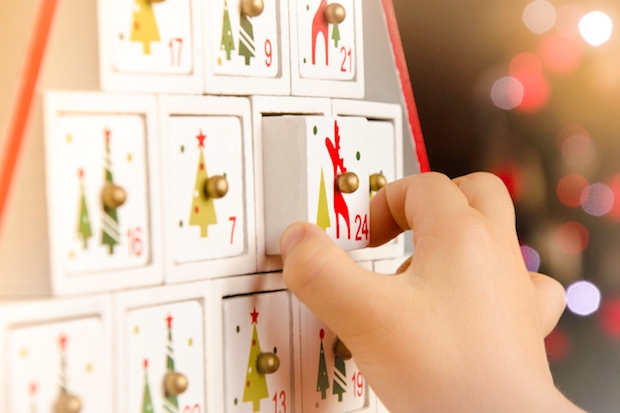It’s not even December, and already it’s almost impossible to read a personal finance article that doesn’t include the words ‘in the run up to Christmas’. My social media feeds are full of photos of friends’ decorated firs and the caption ‘We’ve treed!’
The other thing that is guaranteed to happen around this time of year is that, possibly for the first time since you were a child, you’ve started to wonder if you need an advent calendar. Not one with tiny chocolate robins and angels in it, but a luxury calendar, filled with toys or booze or make-up, depending on your age and preferences.
What started as a bit of a jokey trend has fast become a new – and expensive – tradition. It’s becoming expected but at the same time, it’s also very expensive.
I have 3 children and each year December is fairly straightforward. They can choose an advent calendar from the middle of the shelf, priced at an acceptable £1.50 – £1.70 at most.
A small chocolate eaten before school is a tiny treat they can enjoy as Christmas gets closer. It’s also a great bribe if they haven’t packed their schoolbags.
But a Lego toy each day from a calendar that cost £25? Or a new item of make-up from a £50 calendar? Or a shot of gin or whiskey from a £130 calendar? I’m no Scrooge. but surely that’s excessive. How did marketeers persuade us that we need a pricey treat every day in the run up to the most expensive day of the year?
Just look at the numbers; if I buy my boys a Lego calendar each, that’s 1,566% more expensive than the one where they get a disappointingly small chocolate each day.
If I buy all three of my boys a £25 calendar then that’s £75. American Express reckons we’re going to spend an average of £341 on presents for our loved ones this year. So if I splash out on those pricey advent calendars, then that means spending an extra 22%.
And if I feel under pressure to buy my husband a whiskey calendar too, suddenly I’m spending more than £200 in total on advent calendars alone – before I’ve even bought the turkey.! (He’d probably be drinking more than he should.)
I know, I know; this all sounds really curmudgeonly. I don’t want to be the spectre at the feast, spoiling all the fun by muttering about the cost. However, it really does need saying – we have to rein in our spending expectations at this time of year.
Figures released by the Bank of England last year showed that £572 million was added to credit cards in the month of November alone. Research from uSwitch showed that British people carried an average credit card debt of £636 going into the new year – and more than half said they expected to still be paying it off come December 2017.
I’m not saying that it’s advent calendars alone that push the cost of Christmas up and households into debt, but these luxury advent calendars are a symptom of marketers telling us to make each year better than ever.
Admittedly, I am not immune to the pressures of new Christmas traditions. Last year I spent £29.99 on an Elf on the Shelf (which means that, come December, I’ll be leaping out of bed at 5am each morning because I’ve forgotten to make it look like he wrapped the Christmas tree in toilet paper). But I know that what you do one year as a special luxury or a treat quickly becomes an expected part of Christmas, especially with children.
What’s expected is rarely appreciated. If I buy my 3 boys a £25 advent calendar each this year, I’ll need to do it every year or risk disappointing them. I’d be adding a substantial additional cost to our Christmases, when my children used to be delighted about a single chocolate. Bah, humbug.






Comments